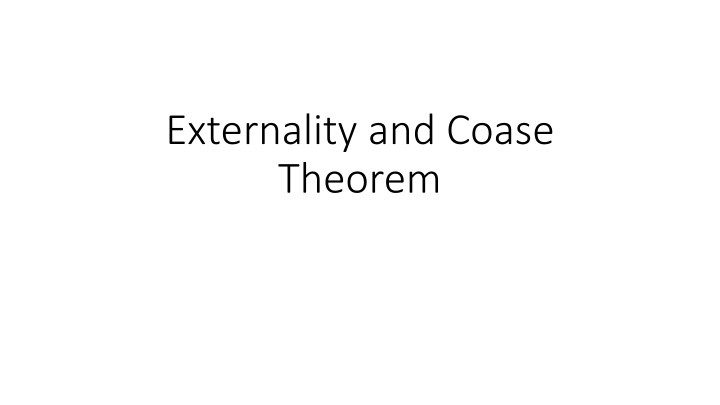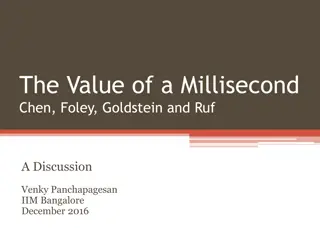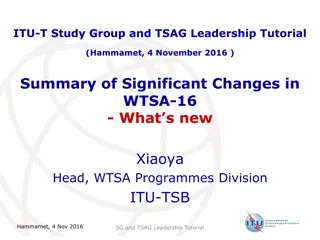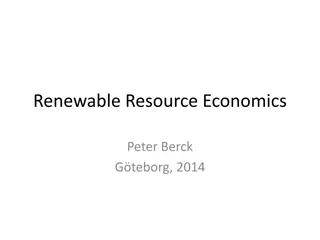
Externality and the Coase Theorem in Economics
Explore the concept of externality and the Coase theorem in economics, including positive and negative externalities, production and consumption externalities, and methods for correcting negative externalities such as Pigouvian tax and quota systems.
Download Presentation

Please find below an Image/Link to download the presentation.
The content on the website is provided AS IS for your information and personal use only. It may not be sold, licensed, or shared on other websites without obtaining consent from the author. If you encounter any issues during the download, it is possible that the publisher has removed the file from their server.
You are allowed to download the files provided on this website for personal or commercial use, subject to the condition that they are used lawfully. All files are the property of their respective owners.
The content on the website is provided AS IS for your information and personal use only. It may not be sold, licensed, or shared on other websites without obtaining consent from the author.
E N D
Presentation Transcript
Externality and Coase Theorem
Externality An unintended cost or benefit created for a third party as a result of a transaction. This cost or benefit is unintended and uncompensated.
Positive Externality Benefit or positive externality Examples: honey production, vaccinations Economics: traders don't receive the full benefits of their actions Consequence: If a positive externality is present the market, Q will be inefficient and under produced Not pareto optimal Shanel Michael
Negative Externality Cost or negative externality Examples: pollution, noise Economics: traders don't pay the full cost of their actions Consequence: If a negative externality is present in the market, Q will be inefficient and over produced Not pareto optimal
Production and Consumption Externality A consumption externality is an externality generated by the consumption behavior of an economic actor. Vehicle exhaust Loud music A production externality is an externality generated by the production activity of a firm. Acid rain Pollution
Correcting for Negative Externalities Pigouvian Tax Quota MSC (Marginal Social Cost) MSC MPC (Marginal private cost) MPC DWL DWL t Pareto optimal Pareto optimal Inefficient Inefficient MSB (Marginal Social Benefit) MSB Quota q1 Free market q1 Free market q2 q2
Correcting for Negative Externalities The optimal amount of pollution is greater than zero Pigouvian Tax = Regulatory Strategy Quota = Command and Control Strategy MSC MSC MPC MPC DWL DWL t (tax = negative externality) Pareto optimal Pareto optimal Inefficient Inefficient MSB MSB Quota q1 Free market q1 Free market q2 q2
Acid Rain Program (1995) A hybrid solution A hybrid solution: A solution to inefficiencies in the allocation of quota rights is to permit trading them. Tradable permits quotas for pollution that can be exchanged to create a market in the right to pollute, and thereby create a tax on polluting. Tradable permits are Some level of pollution makes the economy more efficient. At least for now Is it equitable though??? Not really Permit Price for SO2
Summary: Positive and Negative Externality (Producer) Characteristic Positive Externality Negative Externality Impact on third parties Benefit Cost Algebraic form: MBe MCe Market Q: Too small Too large Marginal social B or C: MSB = MPB + MBe MSC = MPC + MCe Corrective policy Subsidy Quota or Pigouvian tax
Coase Theorem In the absence of transaction costs, and with symmetric information, the initial assignment of property rights does not matter in determining the efficient allocation of resources. AS LONG AS SOMEONE IS ASSIGNED PROPERTY RIGHT, you will reach efficient outcome Equity and distribution is another story
Coase Theorem Note: Transfers are occurring In case 1: From Chem to Boat Pareto Improving In case 2: From Boat to Chem Pareto Optimal
Coase Theorem Why might such compensation schemes not occur/ break down in reality? (Lets think about global warming) Transactions costs may be high if too many parties are involved. Lack of information. What are the costs? Do both sides know and agree on the MC of the externality? Is the profit matrix agreed upon? The Free Rider Problem: When an investment has a personal cost but a common benefit, individuals will underinvest
Practice Question Suppose a good creates a negative externality (Producer) and has the demand, supply and externality marginal cost curves given below: P =1000 2Q (D) P =100+Q (S) MCe=300 Please determine the following: 1.The market P and Q before any policy is adopted to deal with the externality. 2.The efficient Q and the values of Pd and Ps that would be needed to achieve it. 3.The optimal tax rate t that will reach pareto optimal Q. 4.The optimal quota q that will reach pareto optimal Q.
Solution 1. p = 400 and q = 300 2. pd =600, ps = 300 and q = 200 3. t = 300 4. q = 200



















